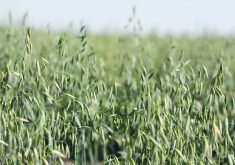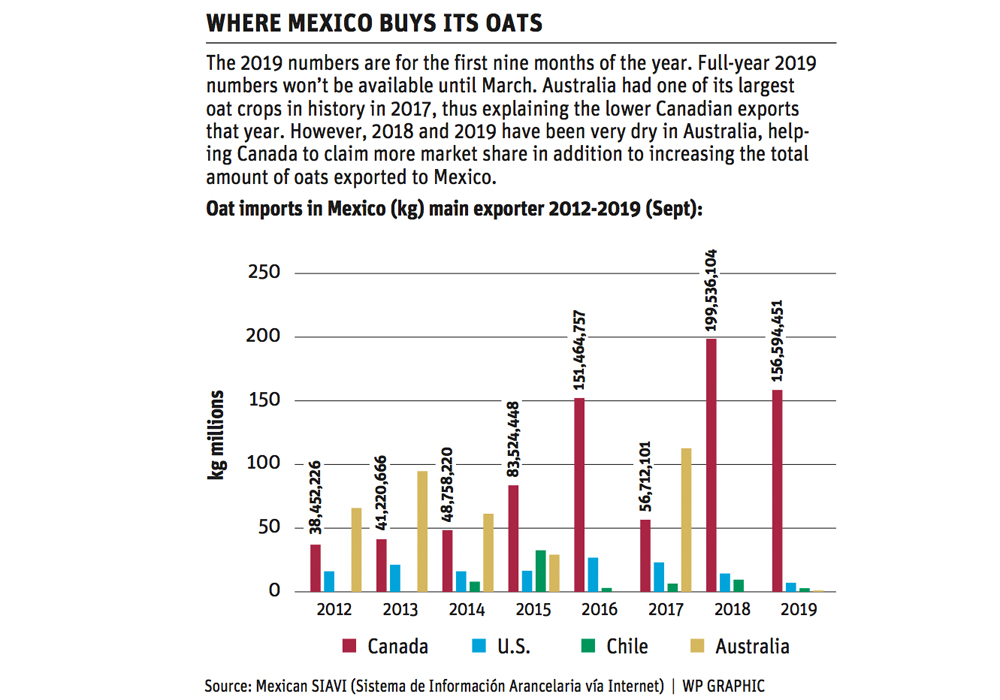A Manitoba miller is nervous about oat quality in Saskatchewan, which has the bulk of acres on the Prairies.
A hot and dry summer likely reduced grain fill on many fields in the province, which could affect oat millers in the coming months.
“Whatever got seeded later, the Saskatchewan crop, I’m really questioning what the weight will be like,” said Real Tetrault, president of Emerson Milling in Emerson, Man.
Persistent heat and lack of rain has been the dominant story in much of Saskatchewan this summer, particularly in the southern grain belt.
Read Also

Food label to change after glyphosate lawsuit
General Mills has settled a lawsuit over the phrase “Made with 100% Natural Whole Grain Oats” on its Nature Valley granolabars
Regina recorded only 1.8 milli-metres of rain in July, and temperatures regularly topped 30 C.
The majority of oats in Saskatchewan are grown north of the Trans-Canada Highway, where heat and drought have been less severe.
Still, parts of the oat-growing region are drier than normal, so yield and quality are uncertain until combines start rolling in a few weeks.
Tetrault is worried about quality because Emerson Milling buys a portion of its oats from Saskatchewan.
“The crop didn’t fill. It ran out of moisture. That’s the concern we have for Saskatchewan,” Tetrault said, explaining that low test weight oats are related to small oat groats.
When conditions are dry, like they have been in many parts of Saskatchewan, oat groats are typically smaller.
“We (may) have some lighter oats that will be difficult to be milling (grade),” he said.
Oats may not be suitable for milling when weights are below 240 grams per half litre of volume.
“We haven’t seen that for a number of years,” he said.
It’s possible that a percentage of Saskatchewan’s production will produce lighter oats, but the crop isn’t a disaster.
Alan Butuk, who farms near Insinger, Sask., along the Yellowhead Highway, said the crop looks decent in his area.
Only 90 mm of rain have fallen on his farm since the start of the growing season, but he’s not panicking.
“I would say we’ve got an average oats crop coming, in our immediate area,” said Butuk, who is vice-president of the Prairie Oat Growers Association.
“Typically a drier year can producer a lighter crop…. This crop, at this stage, it looks OK, but we’re not really going to know the finish of the story until we get combines into it.”
Butuk said that oat quality in test weights will likely be variable from farm to farm, depending if rain fell at the right place at the right time.
Traders in Chicago don’t seem worried about oat volumes or quality in Western Canada. Oat futures have declined to US$2.60 per bushel in the second week of August from July highs of nearly $3 per bu.
Traders may believe oat supplies are secure because acres are up in Western Canada.
Canadian farmers seeded 3.2 million acres of oats this year, up 14 percent from 2016. Saskatchewan acres are estimated at 1.66 million, compared to 1.38 million in 2016.
As well, many buyers and end users aren’t bidding up oats because they contracted production in December and January.
“The export market, a lot of people that we sell to, are just not bidding aggressively at all … for any time frame at this point,” said Ryan McKnight, president of Linear Grain in Carman, Man.
“They’ve got a lot of coverage (contracted production) and are counting on contracts that they’ve got from grain companies and farmers to be within spec…. There are a lot of oats right now on the books.”
Tetrault said oat quality and yields in Manitoba should be average because soil moisture conditions have been much better than other parts of the Prairies.
However, the quality and yield of the Saskatchewan crop remains an open question.
“Until it’s in the bin, stored and we know the weights and yields, everything is up in the air.”


















